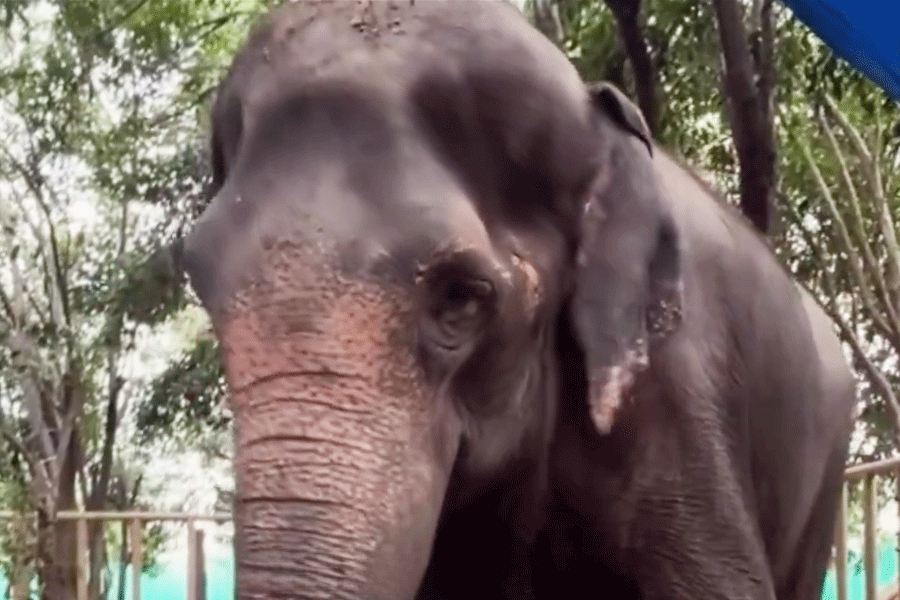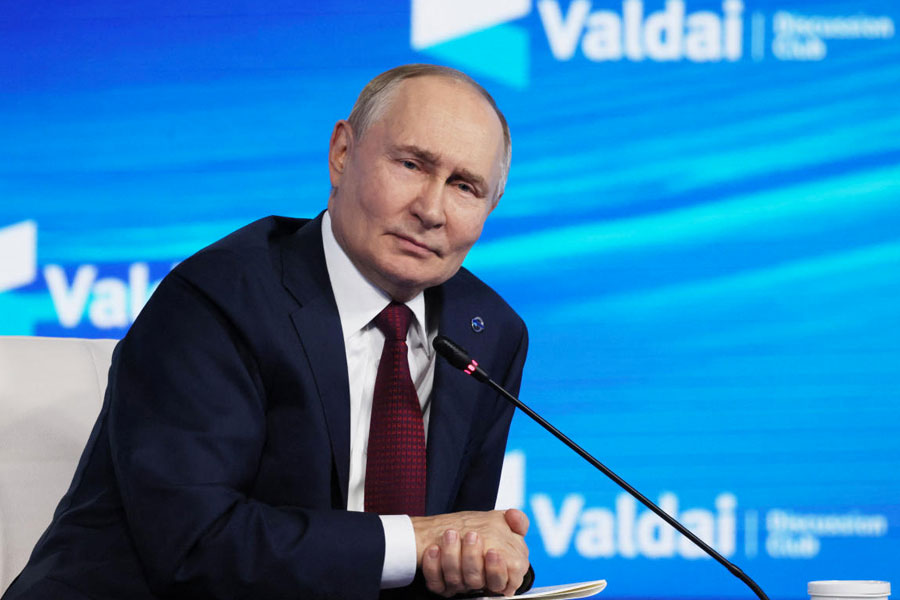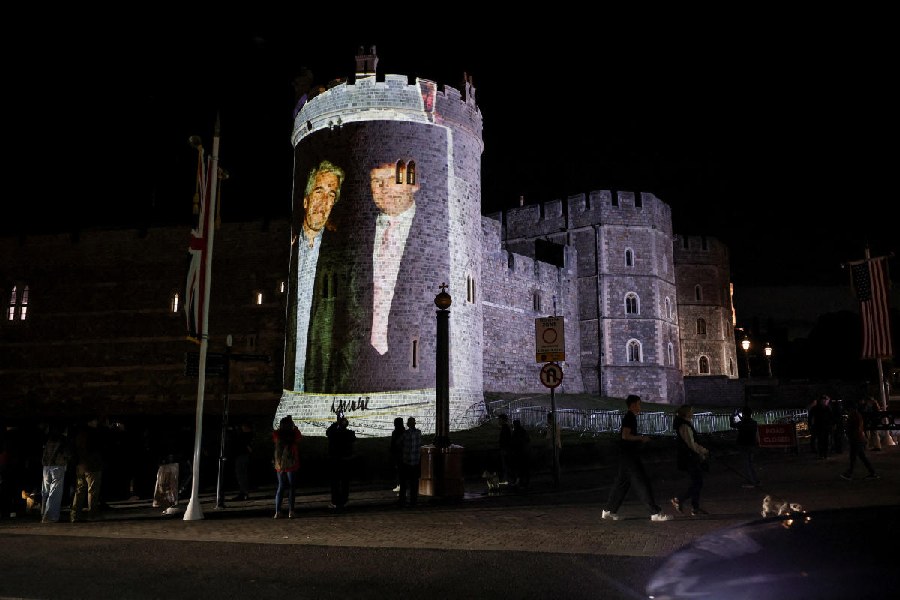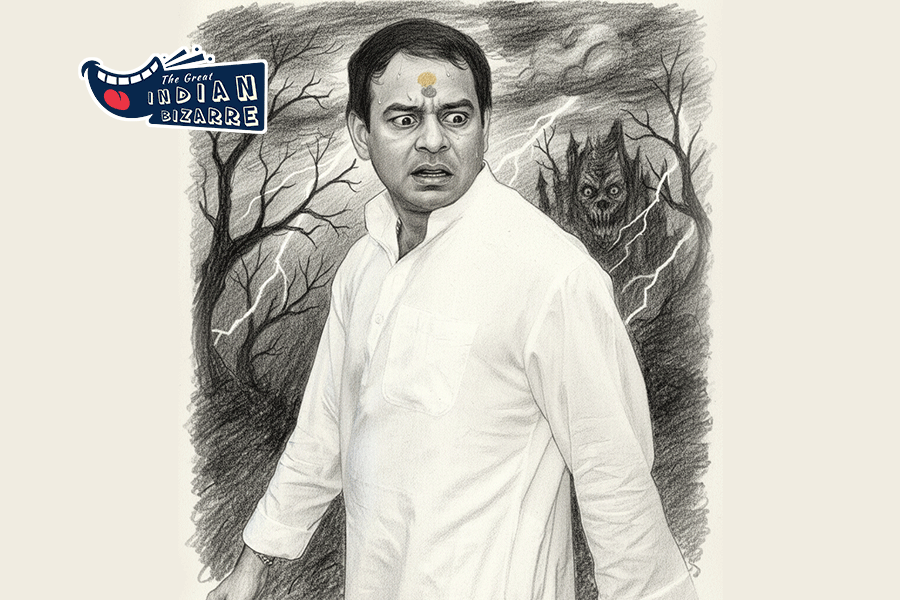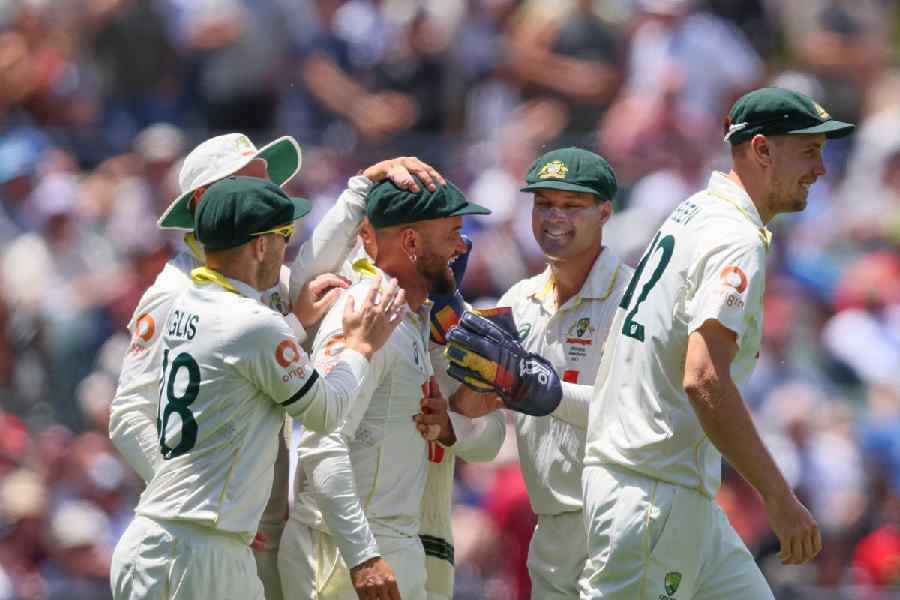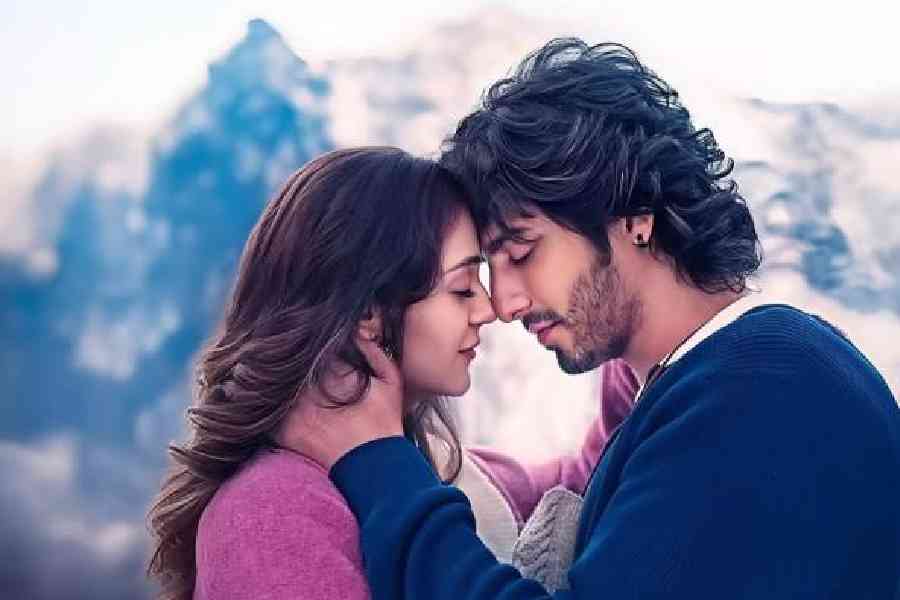 |
| Irrfan Khan with Priyanka Chopra in 7 Khoon Maaf; Ranjan Palit Picture by Aranya Sen |
Everyone’s raving about the look of 7 Khoon Maaf but the film hasn’t been as appreciated. How does that make you feel?
A little sad. Cinematography is something that shouldn’t be singled out. Of course, it feels nice when people say “camera bhalo hoyechhe” but when you single it out from the rest of the film, I feel a little sad. The attempt was to keep the cinematography totally in the zone of the film. It’s not like, “come and see what I’ve done”. It’s exactly what Vishal (Bhardwaj) imagined and wanted. I simply tried to go with the story and the mood as much as possible. So, I would rather hear: good film first, and then the camera.
Did Vishal replace Tassaduq Hussain, who shot Omkara and Kaminey, with you because Kaminey was too dark?
See, Vishal loves dark and in Tassaduq he found a cameraman who loves dark and I think in me he found somebody who also loves dark. Vishal had in fact told me, “I love dark but be a little careful because we have had problems in the past”. So, I played a little safe.
I think it’s a question of sensibility. Not just European films, even here in India, cinematographers like Subrata Mitra and V.K. Murthy were bloody dark. Gorgeous dark in black-and-white. I used to assist Mitra and I had once gone to the lab to grade something. And I remember him going “Aaro, aaro dark korbo aami... eta mood chhobir.” So it’s been done before.
Vishal never spelt out that make it darker. He loves what I do. Once in a while he would ask me: “Ranjan, isn’t that too much light?” That’s it. Three very different women, in fact, have told me that in my kind of lighting space the acting becomes better, heightens the performance.
 |
| Ranjan Palit Picture by Aranya Sen |
Watching the film, one feels that Vishal is trying to straddle different worlds. Did you have to do that as well? Make Priyanka Chopra look good and also make her look real, for example?
I think Vishal is the kind of guy who gets completely immersed in storytelling... visual storytelling. And when we would do a scene, we would forget everything. He never seemed to be bothered about who he was catering to. He was being faithful to his vision of the story, not even the script. It has to work for the core group, the core group being his associates, me, Gulzar saab.... So the question of me trying to do a balancing act does not arise.
As the director of photography, did you play any specific part in the ageing of Priyanka on screen?
I had to try and make sure that the prosthetics couldn’t be seen. I think there were around seven-eight prosthetic parts stuck on her face in the aged avatar. She would be made up for four hours every day. So, I was asked to shoot in such a way that those parts were not seen. But you can do that in an interior night scene, what do you do during the daytime? We had decided that we would correct that with computer graphics but it’s hugely expensive and tough to spend so much money after the shooting is done.
There was supposedly no shot division done before the shooting. So what would a day on the sets of 7 Khoon Maaf be like for you?
Extremely chilled! Vishal would arrive in the morning and I had by then lit up one space. He would ask me to have my second flush Darjeeling tea. I would say, no let me go and light another zone. And he would be like: “Hello, who is pressurising you to do all that? Tumi chilled, aami chilled... let’s chat.” And that too not chat about work. Then, after some breakfast and tea, he would finally get down to some work. We would then go to the space we were to shoot and just feel the scene. “Feel the scene” being his way of setting things up. Then the actors would read the scene and Vishal would ask us what we were planning to do with the camera. He would ask whether I would like to do a dolly or track and I would say, haathey kori? Then we would try it with the camera.
It became a very organic process. This is the way the most interesting films in Europe are being shot. I am not talking Dogma here. Even if you see Eternal Sunshine of the Spotless Mind, all the initial scenes of them (Jim Carrey and Kate Winslet) meeting on the train, then in the house, on the ice, at the station, everything was free-flowing. The camera following the characters and creating the mise en scene... you work out a scene almost to itself. Even 4 Months, 3 Weeks and 2 Days (the 2007 Romanian film which won the Palme d’Or at Cannes) was shot entirely like that.
The reason I have started shooting fiction now, after all these years of documentary filmmaking, is because it is no longer about choreographed camerawork. Shooting with trolleys and cranes with fixed tracks and grids... it’s boring, it’s not spontaneous. Egulo keno hochchhe? What is the motivation for all this choreography? Free-flowing, fluid following of characters is the way forward, is the way to go. Shot breakdown now for me is like mandhatar amoler jinish, an artificial way of shooting a film.
Tell us a couple of so-called technically wrong things you have done in 7 Khoon Maaf.
I have used flares in quite a few scenes. Ten years ago people would have said: “Shala, shoot korte pare na!” If you look at the tango sequence where Priyanka is stretching herself, you can spot a flare. Then again in the scene where Irrfan is sitting and Priyanka comes with the intention of killing him, it’s almost like a halo above Irrfan... huge amount of flare there. It’s very easy to cut that out but I chose to keep it because it was giving a different dimension. Beautifully lit toh anek dekhechhi. It’s not that kind of scene, it’s not that kind of film.
How tough was it to shoot that violent Irrfan-Priyanka scene?
Vishal told me at the outset that we could shoot this only once. Because they were going to really hit each other and they were going to tear each other’s clothes and we can’t have retakes of that. “You do it the best you can.” Now, Canon had given us a 1D camera for free and Vishal had bought a 7D camera. So, we used those two cameras as well for this scene, placed them strategically. I ran one full magazine... 400 feet of film stock while shooting the scene. I started at a little distance from them and then I went on the bed, I walked over them, I sat almost on top of Irrfan... it was a continuous take of four minutes. They hadn’t done any rehearsals and it was perfect for me because in my world of documentaries, there are no rehearsals. You just shoot. As long as the camera doesn’t become self-conscious, just keep shooting.
For someone used to shooting documentaries to go and shoot a rock concert must have been daunting...
(Laughs out loud) We worked under huge pressure, in fact. We had the Yash Raj Films floor for just two days and we shot the two rock songs in those two days. It was fun actually. There was no time to build another set. So I got them to build a rostrum of lights and shoot. I felt that John’s (Abraham) character being a fraud, basically a cheap man, the raw and rough feel would go well with him.
Are you happy with the way your images have been edited (by Sreekar Prasad)?
You know what, I first saw a two-hour-45-minute version. It was then cut by 25 minutes for the final theatrical version. In that cutting, some of the finesse, some of the moments got lost. Maybe the rhythm has also slightly suffered. That director’s cut was beautifully paced.
Right after 7 Khoon Maaf, you shot one Bengali film (Aditi Roy’s Abosheshey) and you are ready to shoot another (Aniruddha Roy Chowdhury’s Aparajita). What’s the plan?
I have been lucky. Both Aditi and Tony (Aniruddha) are extremely nice people and very chilled out. They are open to suggestions. But while filming, it’s their call ultimately. I hate taking over a film. Even if it’s a first-time documentary filmmaker. People in Mumbai have shown interest in working with me right from the time the 7 Khoon Maaf trailer came out. Boley na, jaatey uthey gechhi! But there’s no existing filmmaker apart from Vishal with whom I want to work. I am a snob that way. I appreciate what (Anurag) Kashyap does. bolley, hoyto korbo. I am not dying to work with anybody. I am dying to work with Vishal again.
His fave shot films
The Double Life of Veronique (Slawomir Idziak)
City of God (César Charlone)
Maqbool (Hemant Chaturvedi)
Omkara (Tassaduq Hussain)
4 Months, 3 Weeks and 2 Days (Oleg Mutu)


